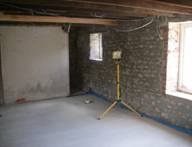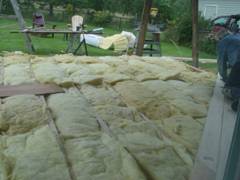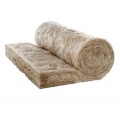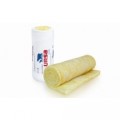Suspended Timber Floor Insulation - Floor Insulation Part 2
by Mark Row
Insulation of suspended timber floors
 The types of timber floors depend on many factors, like how old the building is or its structural form. Historically, first timber floors included timber boards placed on joists directly laid onto the ground, which lead to many problems caused by the dampness of the ground below leading to fast decay. This is why alternatives were found, in order of addressing these issues, leading to traditional suspended timber floor construction, which was based on adding air spaces in between, ventilated with air or ventilation bricks, which kept the humidity and moisture at a low level, thus protecting the timber structure.
The types of timber floors depend on many factors, like how old the building is or its structural form. Historically, first timber floors included timber boards placed on joists directly laid onto the ground, which lead to many problems caused by the dampness of the ground below leading to fast decay. This is why alternatives were found, in order of addressing these issues, leading to traditional suspended timber floor construction, which was based on adding air spaces in between, ventilated with air or ventilation bricks, which kept the humidity and moisture at a low level, thus protecting the timber structure.
Now, before commencing the insulation process, consider the following. If the insulation process includes lifting of the floorboards, this should be done with great care, since it can and will cause some damage. Try to avoid the lifting of floorboards, especially in some historical buildings, by, for example adding insulation from above if possible.
On the other hand, if you are dealing with a wide floorboard that cannot be lift by separating some pieces, which makes the lifting process easier, always consult and hire a professional carpenter to do the job, since there is more risk of damaging the floorboard present here. Since the floor insulation process already involves lifting the floorboard, use this to perform necessary repair work on the floor structure, like strengthening it or repairing timber joists, wall plates or beams. Proper ventilation in suspended timber floors is equally important, in terms of keeping the installed vents and air bricks effective or adding some ventilation if needed. Also, be smart when installing wood floor insulation by taking some preventive measures that will allow you to inspect, upgrade and maintain your floors easier in the future, like providing some access covers.
Finally, always take great care of any water pipes, cables or wiring going through the floor, when insulating, since electricity cables should not be covered with insulation that can make them overheat and cause fire, so they must be removed if possible or otherwise well positioned.
 Regarding the floor insulation methods, this will depend on many factors. If the floorboard cannot be lifted for any reason and there is also no access to the floor from below, the only way of insulating is basically insulating the joists between the boards, which will not affect the heat loss, but can reduce the cold air from penetrating in. On the other hand, if you can access the floor from below, through a basement, the best way to insulate is by adding insulating boards or batts between the joists, making sure that any gaps and holes are properly sealed. This way you will not in any way disrupt the occupants, but bear in mind that this way of floor insulation demands full access to the floor and can sometimes be difficult to perform.
Regarding the floor insulation methods, this will depend on many factors. If the floorboard cannot be lifted for any reason and there is also no access to the floor from below, the only way of insulating is basically insulating the joists between the boards, which will not affect the heat loss, but can reduce the cold air from penetrating in. On the other hand, if you can access the floor from below, through a basement, the best way to insulate is by adding insulating boards or batts between the joists, making sure that any gaps and holes are properly sealed. This way you will not in any way disrupt the occupants, but bear in mind that this way of floor insulation demands full access to the floor and can sometimes be difficult to perform.
Finally another suspended timber ground floor insulation method includes lifting the floorboards and insulating between the joists from above, which may include netting, light plastic or some more expensive breather membrane placed at the bottom of the joists in order of preventing the insulation from slipping down in time. Since this way of insulation includes the lifting of the floorboard, it should be done with special care in order of avoiding potential damage, but will allow you full access to the floor space, enabling the entire area to be properly insulated.
When choosing the best insulation material, it is important to go for more durable and lasting one or one that is highly moisture resistant. Also, according to the Building Regulation, the prescribed U-value in floor insulation must reach 0.25 W/m2K. The most commonly used floor insulation materials are glass and rock (mineral) wool insulation products, or their more natural alternatives like Thermafleece or wood fiber boards, which are non-hazardous, do not cause irritation and have also great acoustic performance. All of these high-quality floor insulation products can be found here at Insulation Shop, all with substantial thermal and acoustic performance, manufactured by some renowned brands like URSA, Knauf and Rockwool.


Knauf Insulation Roll URSA Insulation Roll
If you have more thoughts on Suspended timber floor insulation, feel free to post them in the comments section below. I will be more than happy to answer any questions you might have.






















































































































